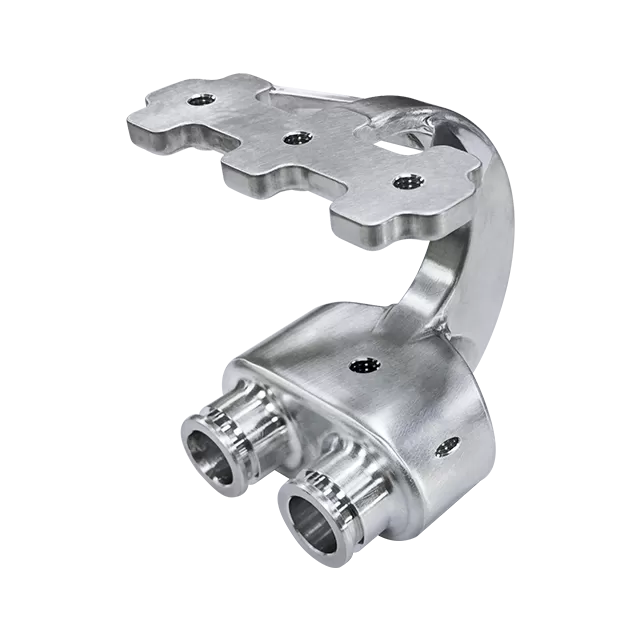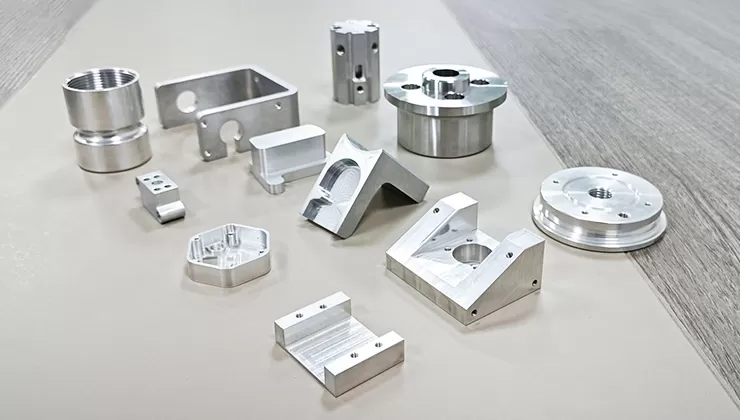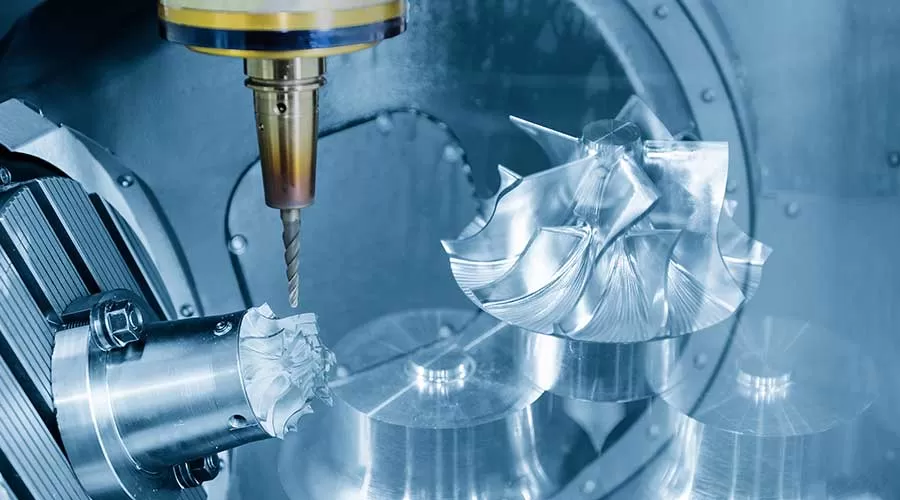Anodize is a method of forming oxide layer on the surface of aluminum parts through electrochemical process. This technology can not only improve the durability of aluminum parts, but also endow them with aesthetics. They are widely used in various fields, such as automobiles, architecture, electronics, and aerospace.
This article will provide a detailed introduction to the principle and process of anodizing, as well as its applications and advantages in different fields, to help you understand how to use anodizing to improve the performance and appearance of aluminum parts.
What is anodize?
Anodizing is a method of forming oxide layer on the surface of aluminum parts through electrochemical process. It involves placing aluminum parts in an electrolytic cell containing an electrolyte solution, and applying current to make them become anodes, forming an oxide layer. During this process, the oxide layer forms and firmly binds to the aluminum metal substrate.

The process of anodic oxidation involves two key reactions: anodic reaction and oxidation reaction. In the anodic reaction, the aluminum surface undergoes oxidation, forming an oxide layer; In the oxidation reaction, oxygen is formed in the pores of the oxide layer.
Process flow of anodized aluminum parts
The process flow of anodized aluminum parts usually includes the following Committed step:
1.Preparation of aluminum parts: Before anodizing, the aluminum parts need to be thoroughly cleaned and degreased to ensure that the surface is clean and free of dirt
2.Anodizing tank: place the cleaned aluminum parts in the electrolytic tank, which contains appropriate electrolyte solutions, such as sulfuric acid, Aluminium sulfate, etc
3.Applying current: By connecting the anode to the positive electrode, direct current is introduced into the electrolytic cell. Make aluminum parts anode. This will result in the formation of an oxide layer on the surface of aluminum parts.
4.Control process: By controlling parameters such as current density, electrolyte composition, and processing time, the thickness and quality of the oxide layer can be controlled. This ensures that the obtained oxide layer has the required performance characteristics.
5.Sealing treatment: After the formation of the oxide layer, sealing treatment is usually required to improve its corrosion resistance and durability. Sealing treatment can be carried out using either hot or cold sealing methods.
Anodize aluminum material selection
1.Applicable aluminum alloys
Anodized aluminum oxide is suitable for most aluminum alloys, including common aluminum series such as 1000, 3000, 5000, 6000, and 7000 series alloys. The following is an example table of aluminum materials:
| No. | Material Name | Features and Applications |
|---|---|---|
| 1 | 6061 Aluminum Alloy | High strength, corrosion-resistant; commonly used in aerospace and automotive parts |
| 2 | 7075 Aluminum Alloy | Extremely high strength, excellent fatigue resistance; commonly used in aerospace and sporting equipment |
| 3 | 5052 Aluminum Alloy | Good corrosion resistance; commonly used in marine environments and automotive parts |
| 4 | 6063 Aluminum Alloy | Good machinability and corrosion resistance; commonly used in construction and decorative items |
| 5 | 5083 Aluminum Alloy | Excellent corrosion resistance; commonly used in marine structures and shipbuilding |
| 6 | 2024 Aluminum Alloy | High strength, good workability; commonly used in aerospace and mechanical parts |
| 7 | Pure Aluminum (1100 or 1050) | Good corrosion resistance and conductivity; commonly used in electronics and electrical components |
| 8 | 6082 Aluminum Alloy | Good mechanical and welding properties; commonly used in transportation and construction industries |
| 9 | 3003 Aluminum Alloy | Good formability and corrosion resistance; commonly used in manufacturing containers and pipes |
| 10 | 2014 Aluminum Alloy | High strength, excellent machinability; commonly used in aerospace and transportation vehicles |
2.Selection of Anodized Coatings
The selection of anodized coatings depends on the application requirements, including hardness, corrosion resistance, and decorative properties. Common coating types include sulfuric acid anodizing, sulfuric acid/oxalic acid anodizing and sulfuric acid/Chromium(III) sulfate anodizing

Technology for Improving Durability of Anodized Aluminum Parts
1.Sealing treatment
Sealing treatment is a method to improve the corrosion resistance and wear resistance of anodized alumina. Commonly used sealants include hot water seals, nickel plated seals, and organic sealants.
2.Embedded particles
During the anodic oxidation process, particles can be embedded in the oxide film to increase surface hardness and lubricity.
3.Adding Pigments
Adding appropriate pigments can change the color of anodized aluminum oxide, enhance its decorative and aesthetic properties.
Techniques for Improving Aesthetic Appearance of Anodized Aluminum Parts
1.Dyeing process
By introducing dyes into the anodized film, various colors of anodized alumina can be achieved. Commonly used dyeing agents include organic dyes and inorganic dyes.
2.Printing and Marking
Printing and marking techniques can be used to add patterns, logos, or text to the surface of anodized alumina to meet specific identification requirements.
3.Textures and patterns
By controlling the process parameters during the anodizing process, different texture and pattern effects can be achieved to increase the decorative properties of anodized alumina.
Advantages of Anodized Aluminum Parts
Anodized aluminum oxide parts have multiple advantages, including:
1.Corrosion resistance: The oxide layer formed by anodic oxidation can effectively protect aluminum parts from corrosion and oxidation.
2.Wear resistance: The oxide layer has a high hardness, making the anodized aluminum oxide parts have excellent wear resistance.
3.Decoration: Anodizing can form various colors and textures of oxide layers on the surface of aluminum parts, improving their aesthetics and decoration.
4.Electrical insulation: The oxide layer has good electrical insulation performance, making anodized aluminum oxide parts play an important role in electrical insulation applications.
Applicable fields of anodized aluminum parts
Anodized aluminum oxide parts are widely used in various fields, including but not limited to:
1.Automotive industry: Anodized aluminum oxide parts are widely used in automotive manufacturing, for body structures, wheels, air intakes, and other components to improve their durability and appearance.
2.Architecture and decoration: Anodized aluminum oxide parts are used for exterior wall decoration, interior decoration, and furniture manufacturing, adding beauty and durability to buildings.
3.Electronics and Electrical: Anodized aluminum oxide parts are commonly used in electronic equipment components such as heat sinks, casings, and connectors to improve heat dissipation performance and durability.
4.Aerospace: Anodized aluminum oxide parts are widely used in the aerospace industry for manufacturing aircraft structures, spacecraft components, and equipment.

conclusion
Through anodizing technology, the durability and aesthetics of aluminum parts can be significantly improved. The oxide layer formed by anodic oxidation can provide excellent corrosion resistance and wear resistance, while also endowing aluminum parts with diverse decorative effects.
Whether in the automotive industry, construction and decoration industry, electronics and electrical industry, or aerospace industry, anodized aluminum oxide parts play an important role in providing excellent performance and appearance.
We hope this article provides you with detailed guidance on anodized aluminum oxide parts. If you need further information or have any questions, please feel free to contact us at any time.
Starting the manufacturing of aluminum parts now!
As an aluminum parts machining manufacturer, we have a team of skilled engineers ready to support you throughout the product development process from prototype design to production. Whether you need technical consultation, material selection, or production process optimization, we can provide customized solutions for you
When you are ready to start the next project, simply upload your 3D CAD design file, and our engineers will reply to you as soon as possible and provide a quotation.
Mobile:+86 185 6675 9667(Gloria Wu)
E-Mail:gloria.wu@longshengmfg.com
FAQ
Anodized aluminum parts are specially treated to form oxide layer on the surface of aluminum through electrochemical process. Compared to ordinary aluminum parts, anodized aluminum parts have higher corrosion resistance, hardness, and surface wear resistance.
Choosing a suitable anodized aluminum alloy should consider specific application requirements. Different alloys have different performance characteristics, such as strength, corrosion resistance, and workability. Consulting professional aluminum alloy suppliers or manufacturers can help you choose alloys that are suitable for your product needs.
Sealants or coatings can be used to protect the surface of anodized aluminum parts. These protective layers can increase the corrosion resistance and wear resistance of the parts, while maintaining their aesthetic appearance. Select appropriate sealants or coatings based on specific needs and application environments to provide the best protection effect.
During the anodizing process, color distortion may occur. To solve this problem, experienced suppliers or manufacturers can be selected to ensure that they have good quality control and color consistency capabilities. In addition, through appropriate process and parameter control, the occurrence of color distortion can be reduced.
Anodic oxidation layer can increase the hardness and wear resistance of aluminum parts, but for applications in particularly high wear environments, relying solely on the anodic oxidation layer may not be sufficient to provide sufficient wear resistance. In this case, it is recommended to consider using coatings or other materials with higher wear resistance.


